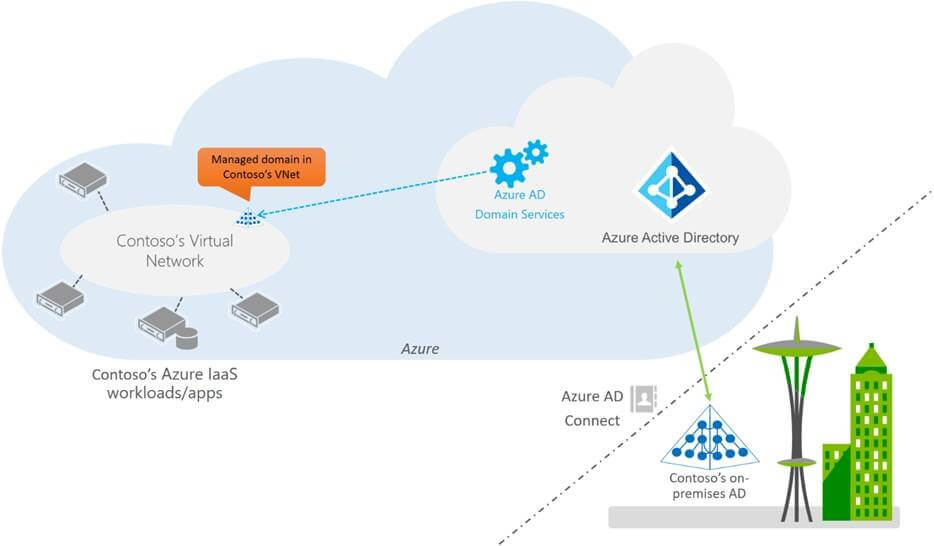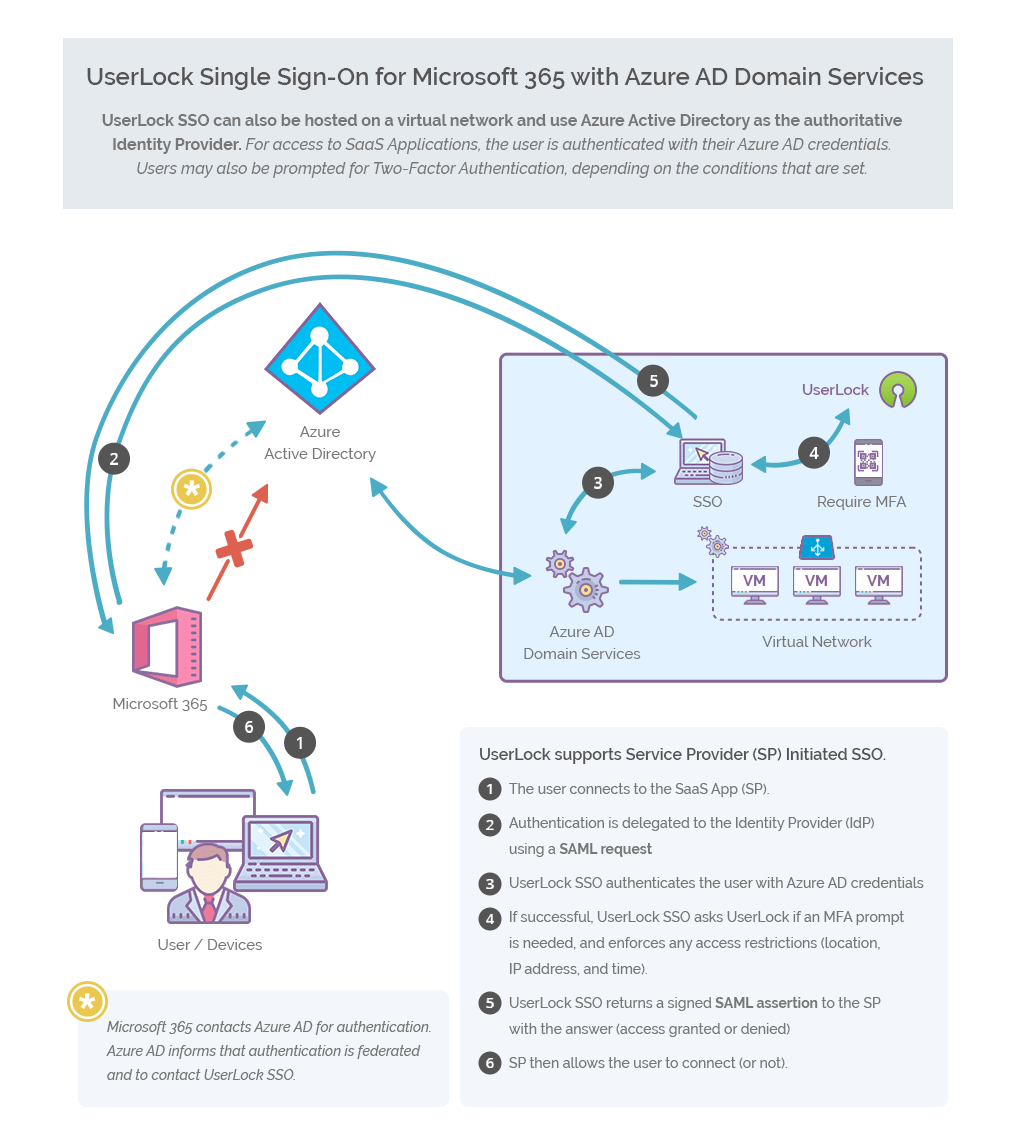Setting Up a Domain and Active Directory

Creating a New Domain

To establish a domain, initiate the following steps:

- As a preparatory measure, ensure the server fulfills the prerequisites, which include having a DNS server, DHCP server, and a primary domain controller (PDC).
- Proceed to the “Server Manager” and select “Add Roles and Features.”
- Choose “Active Directory Domain Services” and complete the wizard.
Configuring Active Directory
After creating the domain, proceed to configure Active Directory by following these steps:
- Launch the “Active Directory Users and Computers” tool.
- Right-click on the domain name and select “Create Organizational Unit.”
- Enter the name of the OU and click on “OK.”
- Right-click on the OU and select “New > User.”
- Enter the username, full name, password, and other relevant details.
- Click on “OK” to create the user.
Assigning Group Policies
To assign group policies, follow these steps:
- Open the “Group Policy Management” console.
- Right-click on the domain name and select “Create a GPO in this domain… .”
- Enter the name of the GPO and click on “OK.”
- Right-click on the GPO and select “Edit.”
- Navigate to the desired policy settings and configure them accordingly.
- Link the GPO to the OU containing the users to whom the policies apply.
Creating a Domain Controller
To establish a domain controller, follow these steps:
- On the server that will host the domain controller, install the “Active Directory Domain Services” role.
- Open the “Active Directory Installation Wizard.”
- Select “Create a new domain in a new forest” and provide the domain name.
- Select “Forest functional level” and “Domain functional level” as Windows Server 2024.
- Enter the Directory Services Restore Mode (DSRM) password and click on “Next.”
- Confirm the settings and click on “Install.”
By completing these steps, you will successfully establish a domain and configure Active Directory, including the creation of users, assignment of group policies, and the establishment of domain controllers. This framework provides the foundation for managing user accounts, securing access, and enforcing policies within a network environment.## Setting Up A Domain and Active Directory ##
Executive Summary
Setting up a domain and Active Directory (AD) is a crucial task for any organization seeking to manage its IT infrastructure effectively. Achieving a secure and optimized network environment demands careful planning, implementation, and ongoing maintenance. This article provides comprehensive guidance on establishing a domain and integrating AD. It covers essential subtopics such as domain structure, Group Policies, security, monitoring, and troubleshooting. By understanding and applying these concepts, organizations can ensure a stable and efficient IT environment that meets their specific requirements.
Introduction
Establishing a domain and implementing AD are foundational steps in building a robust network infrastructure. A domain serves as a logical boundary for organizing and managing network resources, while AD provides a hierarchical framework for managing users, computers, and resources within the domain. Together, they enable centralized control, security, and simplified administration.
Domain Structure
-
Domain Name: A unique and globally recognizable identifier used to designate the organization’s network. It comprises multiple labels separated by periods, such as “example.com” and “example.local”.
-
Organizational Units (OUs): Logical containers within a domain that allow administrators to organize objects based on various criteria, such as location, department, or function. They help maintain a structured and manageable hierarchy.
-
Group Policies: Define rules and settings that control user and computer behavior within the domain. These include security settings, software restrictions, and network configurations.
-
DNS (Domain Name System): A critical service that translates domain names into IP addresses, allowing devices to communicate over the network. It’s crucial for resolving hostnames and locating resources on the internet.
-
Sites: Logical constructs used to group related network segments, such as buildings, campuses, or geographic locations. They enable the implementation of specific policies and configurations for specific locations.
-
Trust Relationships: Allow different domains to communicate and share resources with each other. This enables interoperability between domains, facilitating seamless user access and resource sharing.
Active Directory
-
Users: Represent individual entities with access to the domain and its resources. AD stores information such as usernames, passwords, group memberships, and contact details.
-
Computers: Devices connected to the domain, such as workstations, laptops, and servers. AD manages computer accounts, tracks their configurations, and authenticates their users.
-
Security Groups: A collection of users and/or computers with predefined permissions and privileges. Security groups simplify user access management by assigning permissions to the group rather than individual users.
-
Universal Groups: Similar to security groups, but their membership can include users and computers from multiple domains. They’re particularly useful in environments with multiple domains.
-
Group Policy Objects (GPOs): Logical containers that store Group Policies. GPOs are linked to OUs, domains, or sites, allowing administrators to apply consistent policies across specific scopes.
-
Organizational Structure: AD’s hierarchical structure mirrors the organization’s structure, enabling administrators to delegate administrative roles and responsibilities effectively.
Troubleshooting & Maintenance
-
Regular Monitoring: Keep a watchful eye on the network for any signs of trouble, including performance degradation, security breaches, or unusual behavior. Monitoring helps detect and resolve issues before they cause critical outages or impact productivity.
-
Log Management: Collect and analyze logs generated by network devices and applications. Log analysis provides valuable insights into system behavior, helping administrators investigate incidents, resolve issues, and detect suspicious activities.
-
Regular Software Updates: Keep the network’s software, including Windows operating systems, AD, and supporting applications, up to date with the latest patches and security fixes. Software updates enhance security, performance, and stability.
-
User Education: Provide ongoing training and education to users about proper security practices, AD policies, and reporting procedures. Educated users can help identify and prevent potential security risks.
-
Disaster Recovery Planning: Develop a comprehensive disaster recovery plan that outlines the steps and procedures for restoring the domain and AD in the event of a disaster or major outage. This plan ensures business continuity and data protection.
Conclusion
Establishing a domain and implementing Active Directory is a foundational step toward securing and centralizing the management of an organization’s IT infrastructure. By following the guidelines provided in this article, organizations can ensure that their networks are structured effectively, users are managed efficiently, and security is maintained at the highest level. Ongoing monitoring, maintenance, and user education are essential for keeping the domain and AD environment operating smoothly and securely, providing a solid foundation for business operations and growth.
Keyword Phrase Tags ###
- Domain name hierarchy
- Active Directory user management
- Group policy implementation
- Network monitoring and maintenance
- Disaster recovery and business continuity

I don’t quite understand how to set up a domain and Active Directory. Can someone please explain it to me in simple terms?
Setting up a domain and Active Directory is essential for managing a large network. This article provides a clear and concise guide to the process.
I’ve been using Active Directory for years, but I still find this article helpful. It’s a great resource for both beginners and experienced IT professionals.
This article is a waste of time. It doesn’t provide any new information that I haven’t already found elsewhere.
I disagree with the author’s assertion that Active Directory is the best way to manage a network. There are other, more efficient solutions available.
It’s ironic that an article about setting up a domain and Active Directory is so poorly written.
Oh, look, another article about setting up a domain and Active Directory. How original.
I’m not sure what’s more confusing, the article or the comments. Maybe I should just stick to watching cat videos.
I found this article very helpful. It helped me understand the basics of setting up a domain and Active Directory.
This article is a great resource for anyone who wants to learn more about setting up a domain and Active Directory.
I’m new to networking, and this article was a bit too technical for me. I wish there were more examples.
I agree with the author that Active Directory is the best way to manage a network. It’s a powerful tool that can make your life easier.
It’s ironic that an article about setting up a domain and Active Directory is so poorly written.
Oh, look, another article about setting up a domain and Active Directory. How original.